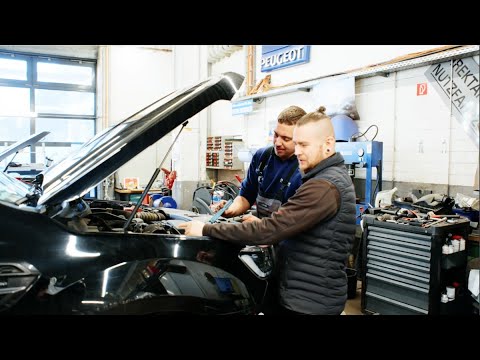Problem addressed
Often after the death of parents or caretakers, in the absence of social support and most often legal, financial and housing matters unregulated, a person with disabilities ends up ina social assistance house as a permanent place of residence. This happens even though and it is not the preferred solution for these. there is no need for such a home, and it is not the preferred solution for these individuals . The system of services offered by social services often fails to protect families with disabilities from such situations. Due to poor financial (insurance) security, people with disabilities and their families are economically dependent on social assistance and social services in the long term. In the absence of caring support, after the eventual death of parents (caretakers), a person with an intellectual disability may, due to actions of dishonest individuals or their own decisions (because they are unable to foresee all the consequences of their actions), be placed in a welfare home by social services.. The system of institutional support provides care but isolates people from their natural environment, creating an enclosed space with strict rules that hinders and often prevent the satisfaction of important life needs.
Innovative solution
The model assumes the creation and sustainable functioning of a local environmental support system. In each of the project sites, such a local system will be built in direct cooperation with the municipal/county self-government and with the local operator (a non-governmental organization/institution) as the leader implementing the model in the given community. The operator, in cooperation with the local government, identifies and develops a new function or structure to introduce an environmental support system (Support Circle Centre). The Centre’s task is to work with families on planning the future of people with disabilities in the areas of: social support (Support Circles), housing, financial security, legal and professional security. The second task is to create and animate a coalition of allies from local organizations, institutions and authorities, which will be an important backbone, providing a system of coordination of services, support, a voice and ally for change at the local level. The model assumes that work on creating Support Circles and Allied Coalition should be carried out simultaneously.
The circle of support is an environmental network of support and care, co-created by people and institutions involved in the daily lives of people with disabilities, on whom their life situation and social functioning depend.
The core of the Support Circles should consist of:
- family members and friends
- neighbors, friends, local volunteers
- doctors, nurses, rehabilitators, therapists
- lawyers, including notaries
- local service providers
- non-governmental organisations
- social workers and representatives of other auxiliary professions
- other families in a similar situation
- religious groups and others.
The members of the Support Circle work together to develop the skills, competencies and interests of the disabled person, create opportunities for him to participate actively in the life of the local community, provide care and ensure security for their present and future functioning as independently as possible.
Close cooperation between the operator and the local government and authorities, as the host of the site, serves to ensure the sustainability of the model’s implementation.
Within the framework of the project, it is envisaged to employ (i) a specialist for support circles, (ii) a specialist for family work and (iii) the provision of specialist services, mainly in the form of individual counselling by legal experts, financial experts, psychologists and social workers. Additionally, it is possible to involve (iv) an assistant for a disabled person (if there are such individual needs), prepared to work with people with intellectual disabilities.
The implementation of the Secure Future Model includes the following steps:
- Establishment of cooperation with local government and selection of local operator.
- Environmental recognition.
- Methodical preparation for the implementation of the Model.
- Establishing cooperation with the families of people with disabilities and starting work with them.
- Forming a coalition of allies.
- Conducting a social campaign.
- Recruitment of potential members of Support Circles.
- Creating Support Circles around people with disabilities.
- Monitoring the work of Support Circles.
Recipients – the model is addressed to:
- adults with intellectual disabilities
- the immediate caregivers of these individuals, particularly parents/caretakers
- the social circle surrounding these people – individuals from the environment who may be members of support circles
Users – the model establishes a professional network comprising various entities from the local environment, both those who provide services to people with disabilities on a daily basis and those who do not. These include:
- health sector entities, including clinics, hospitals,
- social assistance organisations,
- educational and cultural institutions, including cultural centres, theatres, cinemas, galleries and museums,
- non-governmental organisations,
- labour market institutions, including county and regional employment offices, temporary employment agencies, supported employment agencies, employment agencies,
- entrepreneurs from both the sheltered market, i.e. vocational development centres and supported employment enterprises, as well as those operating in the open market.
Key results and benefits
To provide parents with peace of mind about the future, ensuring the safety and security of their sons and daughters with disabilities for the rest of their lives through collaborative planning with the families and with individuals with disabilities. This includes addressing financial, housing, health and social aspects.
To empower individuals with disabilities to lead fulfilling lives as active members of the community (nurturing their passions, interests, social engagement and independence). This initiative aimed to benefit 80 persons with disabilities.
To enhance the sense of security regarding the future of individuals with disabilities by developing individualized security plans that incorporate specific solutions in the areas such as finance, healthcare, housing, social relationships.
To address health, social and cultural challenges faced by people with disabilities more effectively.
To improve the coordination of efforts in tackling the issues affecting people with disabilities.
To develope a model of inter-institutional cooperation aimed at enhancing the effectiveness of collaborative problem-solving for people with disabilities.
To establish a clear and efficient flow of information among collaborating social services, institutions and organisations supporting individuals with disabilities.
To foster a greater sense of mutual support in initiatives benefiting people with disabilities.
To influence and contribute to local policy-making, including through the implementation of the “Safe Future” model.
Potential for mainstreaming
A model was developed, ready for use by other entities, which describes the assumptions and activities utilized in the project (currently only the Polish version is available).




